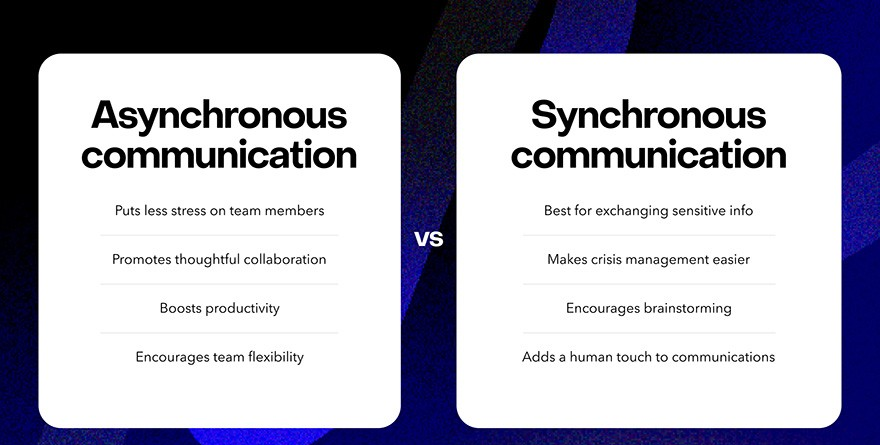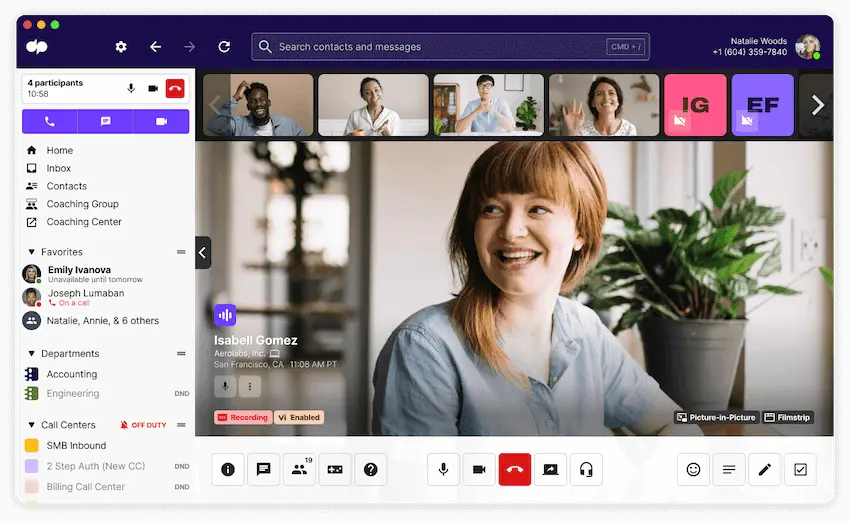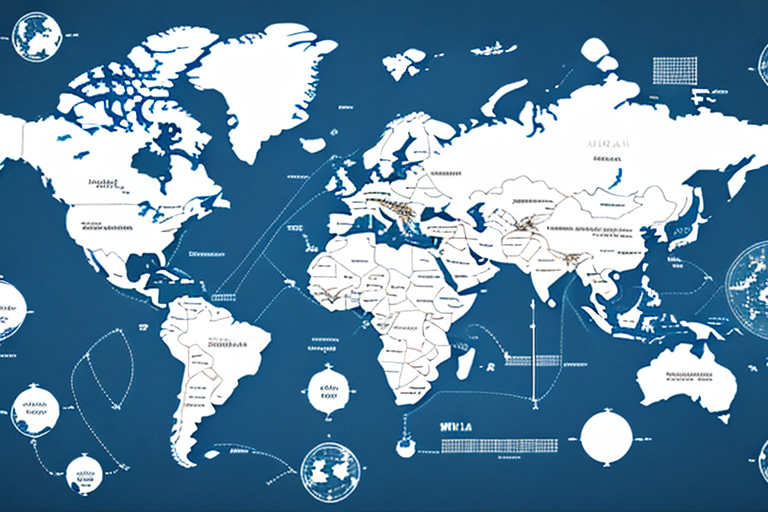Building Trust with Distributed Developers: Communication Hacks That Work
Remote team trust isn’t built on status updates. Here’s how we made async human, not hollow.

From async check-ins to video “watercooler” breaks - rituals that actually bond your in-house and offshore squads
Let’s get one thing out of the way: “trust” isn’t built on vibes and HR slides. Especially not when your backend dev is in Bangalore, your designer’s in Belgrade, and your product manager is yelling into Slack from Boston.
Everyone loves a good “remote culture” platitude - “overcommunicate,” “default to transparency,” “build psychological safety” - but those don’t mean squat if your offshore team still finds out about sprint changes three hours too late or your US folks still think their Indian counterparts are just “ticket takers.”
We’ve run cross-border squads for over 6 years now - through launch frenzies, failed pivots, and the occasional 3 a.m. prod deploy. And we’ve learned this: trust doesn’t come from a values doc. It comes from small, deliberate rituals that compound.

The Unsexy Truth About Trust
We once had a designer in Romania who thought our Indian frontend dev hated her. Why? Because he’d never respond to her Looms with comments, just emoji reacts.
The dev, meanwhile, assumed she hated him - because she never tagged him in Figma and kept saying “we’ll circle back.”
Classic case of cultural mismatches + async weirdness = slow trust erosion.
Here’s the deal:
Trust isn't just about what you say - it’s about when, how, and whether you show you’re paying attention. Especially when nobody’s bumping into each other in hallways.
It took us a while (and some painful retros) to realize:
- Offshore folks often feel left out of “real” decisions, even if unintentionally.
- In-house folks often assume silence from offshore means “we’re blocked” or worse, “we’re not bought in.”
- Both sides feel like they’re overcommunicating. Neither is.
So what do you do? You ritualize the stuff that builds mutual visibility and human moments - without adding another 3-hour Zoom.

Async Doesn’t Mean Aloof
Let’s start with the crown jewel of remote work: asynchronous communication.
Every Notion bro and Zapier thread swears by it. But async without emotional bandwidth is a one-way ticket to alienation.
Here’s how we made it less robotic and more connective:
1. Daily async standups - but make them personal.
Yes, we use Slack threads. No, we don’t just say “Yesterday: X, Today: Y.”
We ask each teammate to throw in a mood emoji and a one-liner on something non-work too.
Example:
🫠 “Blocked on the Stripe API docs. Also, my cat knocked over my plant again.”
Small? Yes. But you learn who’s silently drowning or who’s just having a Monday.
2. Loom check-ins with actual eye contact.
Once a week, every team member records a 1–2 minute Loom recap - what they’re proud of, what’s annoying, and one “ask.”
Turns out seeing a human face explain context beats a 300-word Slack. Every time.
3. Emojis = micro-alignment.
We don’t just “react” for fun. We made a Slack emoji legend:
✅ = approved
👀 = reviewing
🤯 = big learning
🎯 = aligned
🎉 = shipped
It’s surprisingly effective at reducing reply anxiety and nudging clarity.

The Watercooler Isn’t Dead - It’s Just on Zoom
This one’s for the skeptics: yes, even devs who claim to “just want to code” often miss being seen.
4. Watercooler Wednesdays
Every fortnight, we host a 20-minute no-agenda call called Watercooler Wednesday.
Only rule: no screen sharing, no Jira talk. We’ve done:
- “Show us your desk” day
- Pet introductions
- “What’s one weird superstition in your culture?”
- “What’s something you cooked recently?”
The banter is gold. And it bleeds into smoother actual work convos.
5. Random Pair Calls
We set up Donut on Slack. Once a week, it pairs two people (across locations) for a 15-minute coffee call.
People grumble. But post-call? They get each other.
One US PM said this after talking to his QA peer in Kerala:
“Man, I didn’t realize he used to be a dev too. Makes sense why he’s so opinionated on test coverage.”
6. Praise in public, feedback in DMs
If someone crushes a delivery or fixes a gnarly bug, we shout them out in #wins - not just in the sprint review.
Bonus: we tag their manager too. Visibility goes a long way in building confidence.

Time Zones Aren’t the Villain - Invisibility Is
We’ve heard it all:
“But the time zone overlap is just 1 hour!”
“Isn’t async enough?”
Here’s the thing - distributed work is more about coordination debt than clock-time debt.
7. Shared “Overlap Windows” (but flexible)
Every team decides on a 2-hour overlap window that works for at least 3 weekdays.
For us, 6:30–8:30 PM IST (9–11 AM EST) works beautifully.
Within this window:
- We do sprint planning, pair debugging, or just talk blockers live.
- Everyone knows this is sacred - no meetings outside this unless urgent.
8. Meeting recordings + highlights FTW
If someone misses a call, we don’t just drop a Zoom link and run.
We use TLDV or Grain to share 2–3 key moments with timestamps + Slack summary.
Respecting people’s time and helping them stay looped in? Win-win.
9. Designated “Comm Sherpa” per sprint
One person in each sprint squad owns comm hygiene:
- Are Jira tickets updated?
- Are PRs getting reviewed on time?
- Are decisions being logged in Notion?
This lightweight role ensures no one’s stuck waiting on a ghost update.

Trust Is a Loop, Not a Leap
People often assume trust means “I believe you’ll deliver.”
But distributed trust has more layers:
- Do I think you’ll respond?
- Do I think you’ll flag early if you’re stuck?
- Do I think you care about the collective output, not just your ticket?
To build that, we:
- Rotate demo presenters.
- Involve offshore folks in roadmap grooming.
- Invite them to client calls when relevant.
It’s not performative. It’s participatory.
And here’s something we got wrong for years:
We thought adding meetings would build trust.
What actually worked was giving shared control - of rituals, of norms, of process tweaks. When the offshore folks feel like co-owners, not contractors, trust compounds.
Rituals That Build vs Kill Trust
| Ritual | Trust-Building | Trust-Eroding |
|---|---|---|
| Async Standups with mood check | ✅ | |
| One-way Jira updates with no Slack context | ❌ | |
| Video demo presentations across teams | ✅ | |
| Only onsite folks presenting in reviews | ❌ | |
| Donut calls across borders | ✅ | |
| Surprise sprint scope changes | ❌ | |
| Public shoutouts across time zones | ✅ | |
| All-hands timed for HQ only | ❌ |
Don’t over-index on tools. Index on intentionality.
Bonus Bytes: Quick Hacks That Actually Work
✴ Turn off read receipts in Slack. Removes pressure and reduces overthinking.
✴ Use “Working With Me” Notion docs. Each person outlines:
- Preferred work hours
- Feedback style
- Pet peeves (one of ours: people who say “pinging again” without context)
✴ Host a “Remote Retro.” Once a quarter, ask: “What’s one thing we should stop doing that’s hurting cross-team trust?”

Wrap-up
Distributed teams don’t fail because of talent gaps. They fail because no one bothered to translate “how we work” into shared rituals.
You don’t need more status updates. You need clarity, chemistry, and cadence.
And maybe a few memes in Slack.
Want a distributed team that feels like a pit crew, not a patchwork? Let’s chat. 1985’s squads plug into your product org like they’ve been there since Day 1.
FAQ
1. What’s the biggest barrier to trust in offshore or distributed teams?
The biggest barrier isn’t time zones or language - it’s invisibility. When distributed teammates feel like second-class citizens or get looped in too late, trust erodes. It’s not about proximity; it’s about participation and clarity.
2. Should we default to async or prioritize live meetings?
Async is great for execution and status updates. But for alignment, context sharing, and relationship-building, some real-time overlap is critical. The trick is to set consistent overlap hours (even if it’s just 2–3 times a week) and be intentional with what goes live vs async.
3. How can I make daily async standups more human and less robotic?
Add a mood indicator, a personal tidbit, or a non-work win. Something as simple as “🫠 Blocked on PR review. Also, my toddler renamed my Zoom display name to ‘Poop Emoji General.’” builds empathy and reminds everyone there’s a human behind the update.
4. What’s the role of humor or banter in building trust remotely?
It’s massive. Humor breaks hierarchies and softens friction. Shared jokes in Slack threads, meme reactions to bugs, or Watercooler Zooms with “Show your desktop wallpaper” themes go a long way in making people feel safe to speak up or push back.
5. How do I ensure offshore developers feel like co-owners, not just executors?
Loop them into roadmap discussions, let them demo work, rotate responsibilities, and invite them to client calls when relevant. Ownership is felt when voices are heard, not just when tickets are closed.
6. How do I spot trust issues before they become unfixable?
Look for the quiet disengagements: PRs getting delayed with no explanation, shorter Slack messages, lower participation in retros, or defaulting to “just tell me what to do.” These aren’t productivity issues - they’re signals of eroding trust.
7. What’s the best way to give feedback across time zones and cultures?
Do it privately, promptly, and with context. Avoid vague notes like “This wasn’t good enough.” Instead: “Hey, I noticed the bug fix skipped the edge case we discussed. Was there a blocker or did we miscommunicate?” Clarity without blame builds confidence.
8. Should we record all meetings for the sake of async teammates?
Yes, but go further - don’t just share the recording. Use tools like Grain or TLDV to highlight key decisions, tag relevant teammates, and drop a 2-line Slack summary. It shows you respect their time and helps reduce FOMO.
9. How do we maintain trust when a team is scaling fast?
Ritualize trust early. Even with new joiners, enforce habits like weekly Loom intros, Donut pairings, and open calendar hours. Trust doesn’t scale by accident - it scales through documented, repeatable human touchpoints.
10. Isn’t all this just extra work? Can’t we just let engineers code?
If your engineers don’t feel safe, respected, and included, their code will reflect that. Communication rituals aren’t fluff - they’re guardrails for high-trust, high-output teams. Skipping them isn’t saving time, it’s compounding risk.



